*NURSING > QUESTIONS & ANSWERS > NUR 110 Chapter 08: Communication and the Nurse-Patient Relationship : Fundamental Concepts and Skil (All)
NUR 110 Chapter 08: Communication and the Nurse-Patient Relationship : Fundamental Concepts and Skills for Nursing, 5th Edition(All correct answers)
Document Content and Description Below
1. The nurse can best ensure that communication is understood by: a. speaking slowly and clearly in the patient’s native language. b. asking the family members whether the patient understands. c.... obtaining feedback from the patient that indicates accurate comprehension. d. checking for signs of hearing loss or aphasia before communicating. ANS: C The best way to determine understanding is to ask the patient. Factors such as anxiety, hearing acuity, language, aphasia, or lack of familiarity with medical jargon or routines can all contribute to misunderstanding. DIF: Cognitive Level: Comprehension REF: p. 103 OBJ: Theory #1 TOP: Feedback KEY: Nursing Process Step: Evaluation MSC: NCLEX: Physiological Integrity: Basic Care and Comfort 2. The nurse recognizes a verbal response when the patient: a. nods her head when asked whether she wants juice. b. writes the answer to a question asked by the nurse. c. begins sobbing uncontrollably when asked about her daughter. d. is moaning and restless and appears to be in pain. ANS: B Verbal communication involves words, either written or spoken. Nodding, sobbing, and moaning are nonverbal communication. DIF: Cognitive Level: Comprehension REF: p. 101 OBJ: Theory #1 TOP: Verbal Communication Feedback KEY: Nursing Process Step: Assessment MSC: NCLEX: Physiological Integrity: Basic Care and Comfort 3. The nurse recognizes the patient who demonstrates communication congruency when the patient: a. smiles and laughs while speaking of feeling lonely and depressed. b. wrings her hands and paces around the room while denying that she is upset. c. is tearful and slow in speech when talking about her husband’s death. d. states she is comfortable while she frowns and her teeth are clenched. ANS: C Congruent communication is the agreement of verbal and nonverbal messages. DIF: Cognitive Level: Comprehension REF: p. 101 OBJ: Theory #1 TOP: Congruence KEY: Nursing Process Step: Assessment MSC: NCLEX: Physiological Integrity: Basic Care and Comfort 4. A Hispanic patient approaches the Asian nurse and, standing very close, touches the nurse’s shoulder during their conversation. The nurse begins to step back to 18 to 24 inches, while smiling and nodding to the patient. This situation is most likely an example of: a. the nurse’s need to maintain a professional role rather than a social role. b. a patient’s attempt to keep the nurse’s attention. c. a nurse’s need to establish a more appropriate location for conversation. d. a difference in culturally learned personal space of the nurse and the patient. ANS: D Personal space between people is a culturally learned behavior; Asians, North American natives, and Northern European people generally prefer more personal space than people of Hispanic, Southern European, or Middle Eastern cultures. DIF: Cognitive Level: Comprehension REF: p. 103 OBJ: Theory #2 TOP: Cultural Differences KEY: Nursing Process Step: Implementation MSC: NCLEX: Psychosocial Integrity: Coping and Adaptation 5. A nurse says to a patient, “I am going to take your TPR, and then I’ll check to see whether you can have a PRN analgesic.” In considering factors that affect communication, the nurse has: a. used terminology to clearly inform the patient of what she is doing. b. given information that is unnecessary for the patient to know. c. used medical jargon, which might not be understood by the patient. d. taken into consideration the patient’s need to know what is happening. ANS: C Medical jargon such as abbreviations or medical terminology is often misunderstood, even by well educated people. DIF: Cognitive Level: Comprehension REF: p. 103 OBJ: Theory #3 TOP: Blocks to Communication KEY: Nursing Process Step: Implementation MSC: NCLEX: Psychosocial Integrity: Coping and Adaptation 6. A nurse using active listening techniques would: a. use nonverbal cues such as leaning forward, focusing on the speaker’s face, and slightly nodding to indicate that the message has been heard. b. avoid the use of eye contact to allow the patient to express herself without feeling stared at or demeaned. c. anticipate what the speaker is trying to say and help the patient express herself when she has difficulty with finishing a sentence. d. ask probing questions to direct the conversation and obtain the information needed as efficiently as possible. ANS: A Eye contact is a culturally learned behavior and in some cases may not be appropriate. Probing questions or finishing the patient’s sentence is not part of active listening and is detrimental to an interview. DIF: Cognitive Level: Comprehension REF: p. 104 OBJ: Theory #3 TOP: Active Listening KEY: Nursing Process Step: Implementation MSC: NCLEX: Psychosocial Integrity: Coping and Adaptation 7. When the patient says, “I don’t want to go home,” the nurse’s best therapeutic verbal response would be: a. “I’m sure everything will be fine once you get home.” b. “You don’t want to go home?” c. “Doesn’t your family want you to come home?” d. “I felt like that when I had surgery last year.” ANS: B The use of reflecting encourages the patient to expand on his or her feelings or thoughts. DIF: Cognitive Level: Application REF: p. 105|Table 8-1 OBJ: Theory #3 TOP: Communication Techniques KEY: Nursing Process Step: Implementation MSC: NCLEX: Psychosocial Integrity: Coping and Adaptation 8. To begin talking with a newly admitted patient about pain management, the nurse would most appropriately state: a. “You look pretty comfortable. Are you having any pain?” b. “Tell me about the pain you’ve been having.” c. “Is this pain the same as the pain you had yesterday?” d. “Don’t worry; this pain won’t last forever.” ANS: B An open-ended question allows the patient to express his or her feelings or needs. DIF: Cognitive Level: Application REF: p. 105|Table 8-1 OBJ: Theory #3 TOP: Communication Techniques KEY: Nursing Process Step: Implementation MSC: NCLEX: Psychosocial Integrity: Coping and Adaptation 9. When a patient begins crying during a conversation with the nurse about the patient’s upcoming surgery for possible malignancy, the nurse’s most therapeutic response would be: a. “Your surgeon is excellent, and I know he’ll do a great job.” b. “Oh, dear, your gown is way too big, let me get you another one.” c. “Don’t cry; think about something else and you’ll feel better.” d. “Here is a tissue. I’d like to sit here for a while if you want to talk.” ANS: D Offering self, or presence, and accepting a patient’s need to cry is supportive. DIF: Cognitive Level: Application REF: p. 105|Table 8-1 OBJ: Theory #3 TOP: Therapeutic Techniques KEY: Nursing Process Step: Implementation MSC: NCLEX: Psychosocial Integrity: Coping and Adaptation 10. To enhance the establishment of rapport with a patient, the nurse should: a. identify himself by name and title each time he introduces himself. b. share his own personal experiences so that the patient gets to know him as a friend. c. act in a trustworthy and reliable manner; respect the individuality of the patient. d. share information with the patient about other patients and why they are hospitalized. ANS: C Trust and reliability, as well as conveying respect for the individual, all promote rapport. Identifying oneself is important but in itself does not promote rapport. Sharing personal experiences or divulging the confidential nature of other patients’ conditions is not appropriate in the nurse-patient relationship. DIF: Cognitive Level: Comprehension REF: p. 111 OBJ: Clinical Practice #2 TOP: Rapport KEY: Nursing Process Step: Implementation MSC: NCLEX: Psychosocial Integrity: Coping and Adaptation [Show More]
Last updated: 1 year ago
Preview 1 out of 21 pages

Reviews( 0 )
Document information
Connected school, study & course
About the document
Uploaded On
Oct 21, 2020
Number of pages
21
Written in
Additional information
This document has been written for:
Uploaded
Oct 21, 2020
Downloads
0
Views
48

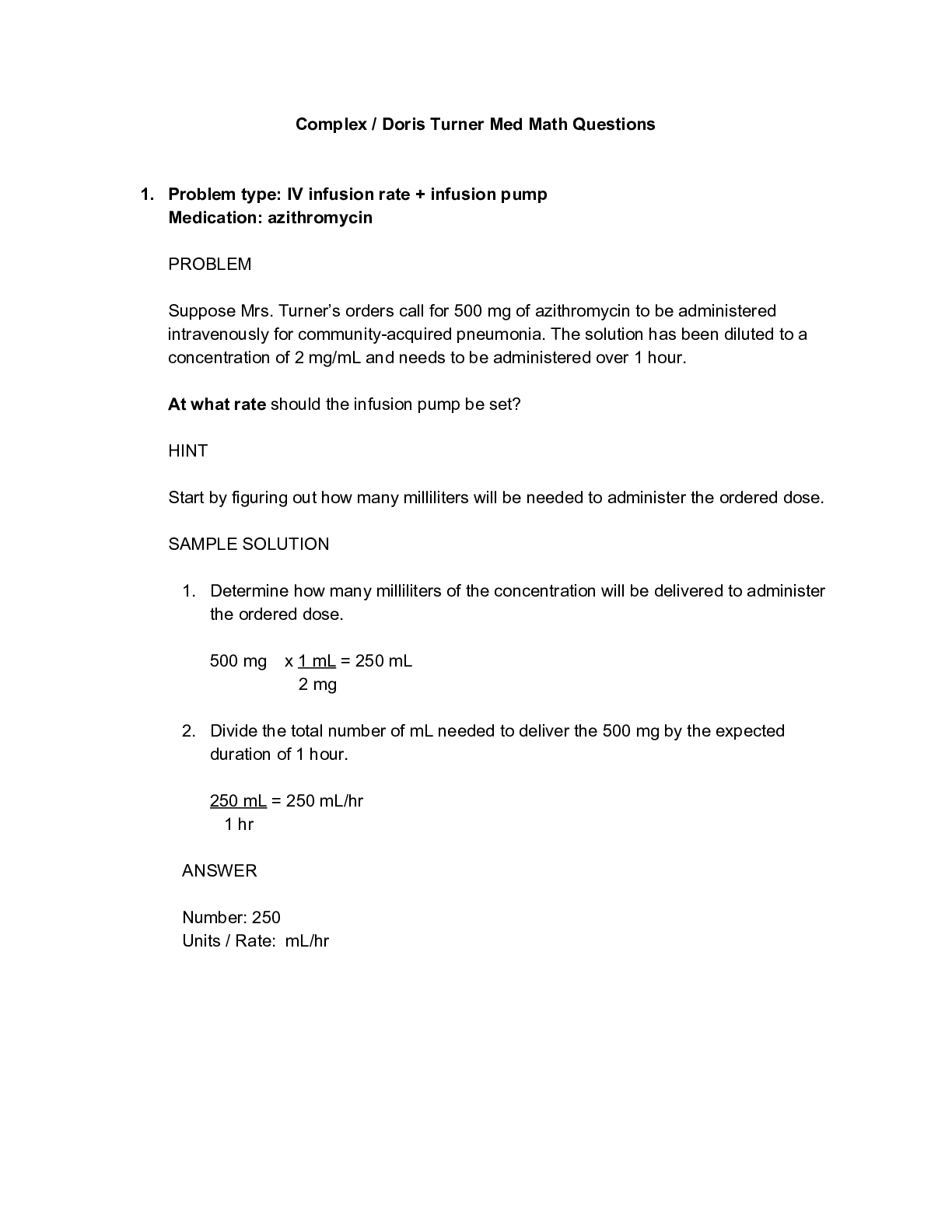





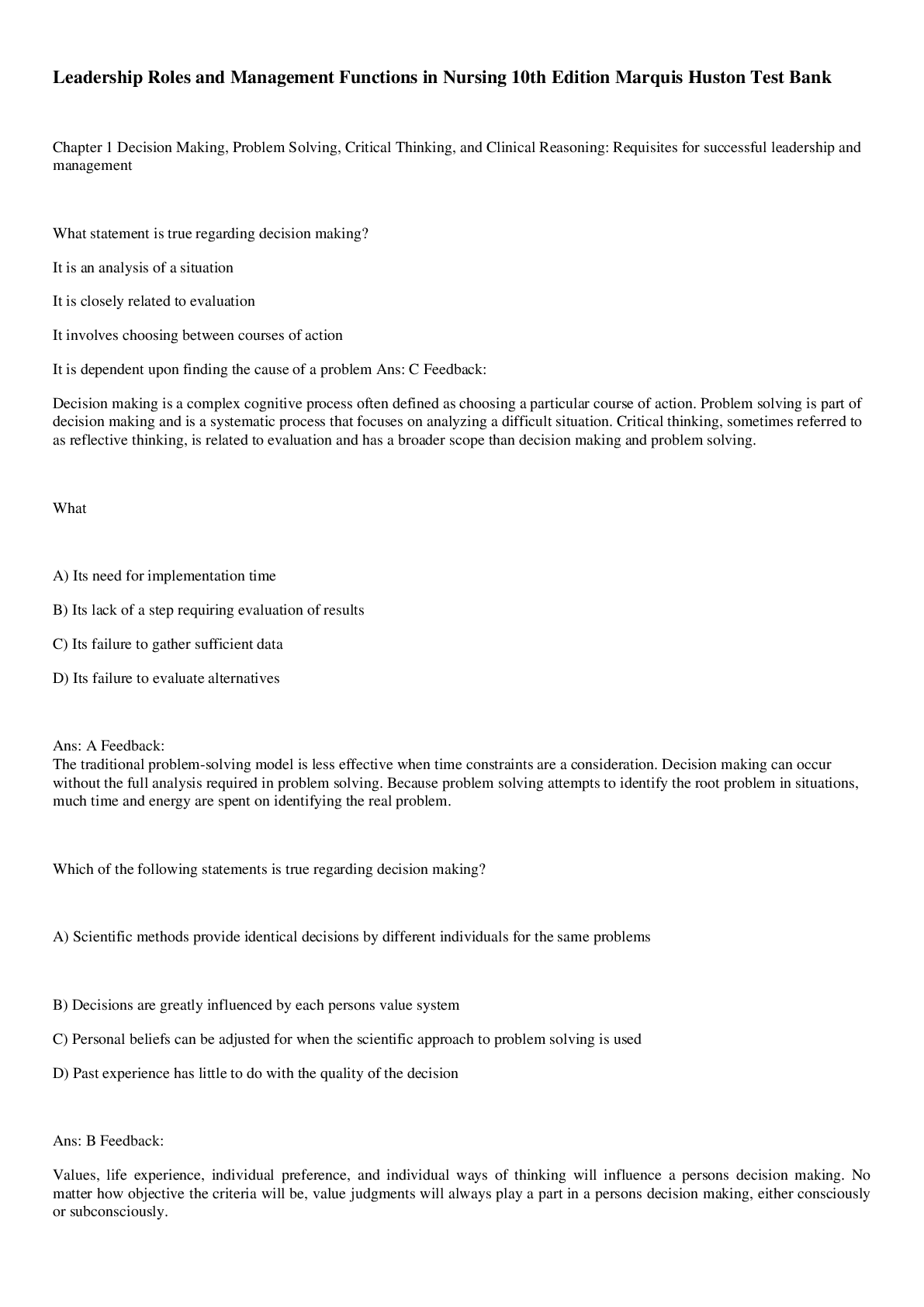


 (1).png)


 A+ Guide.png)
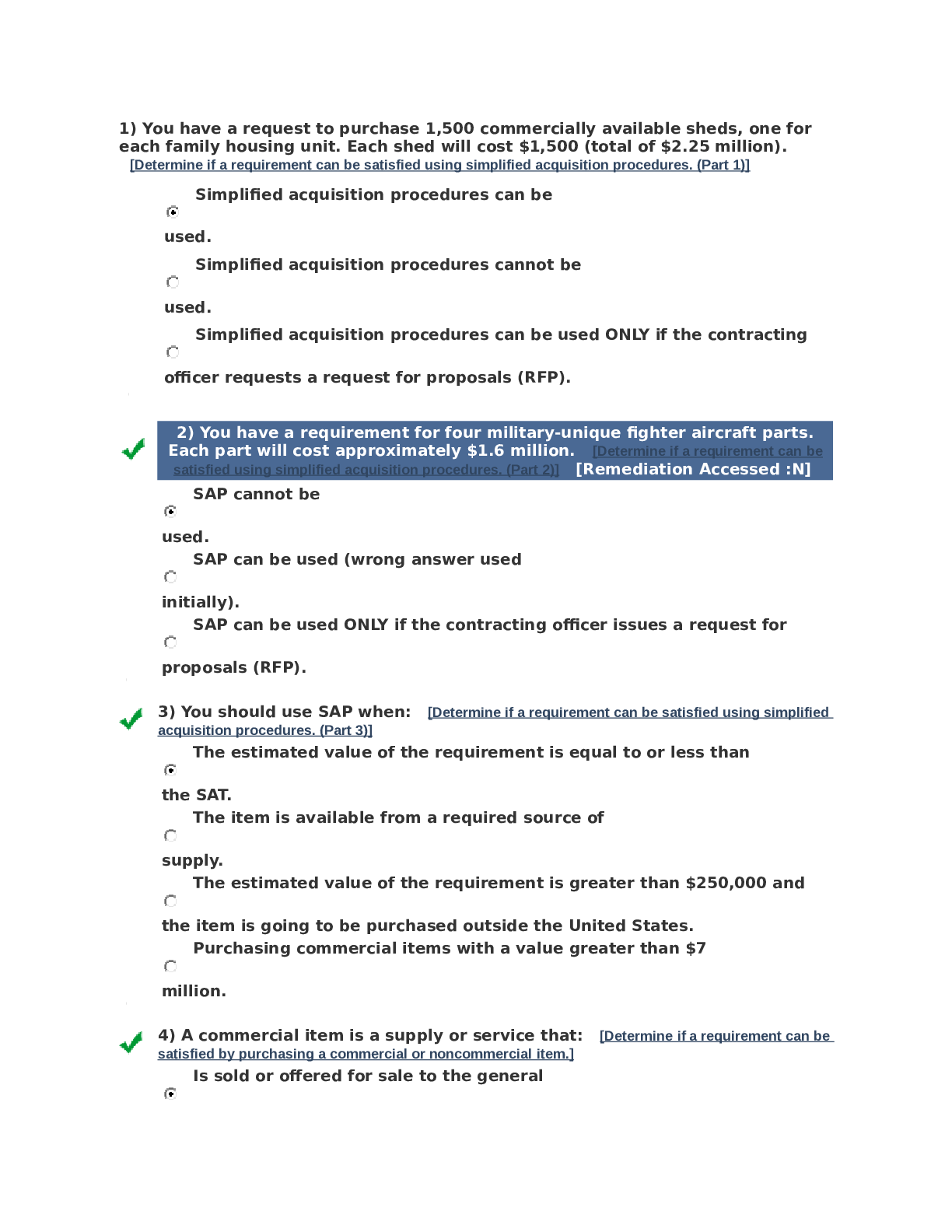



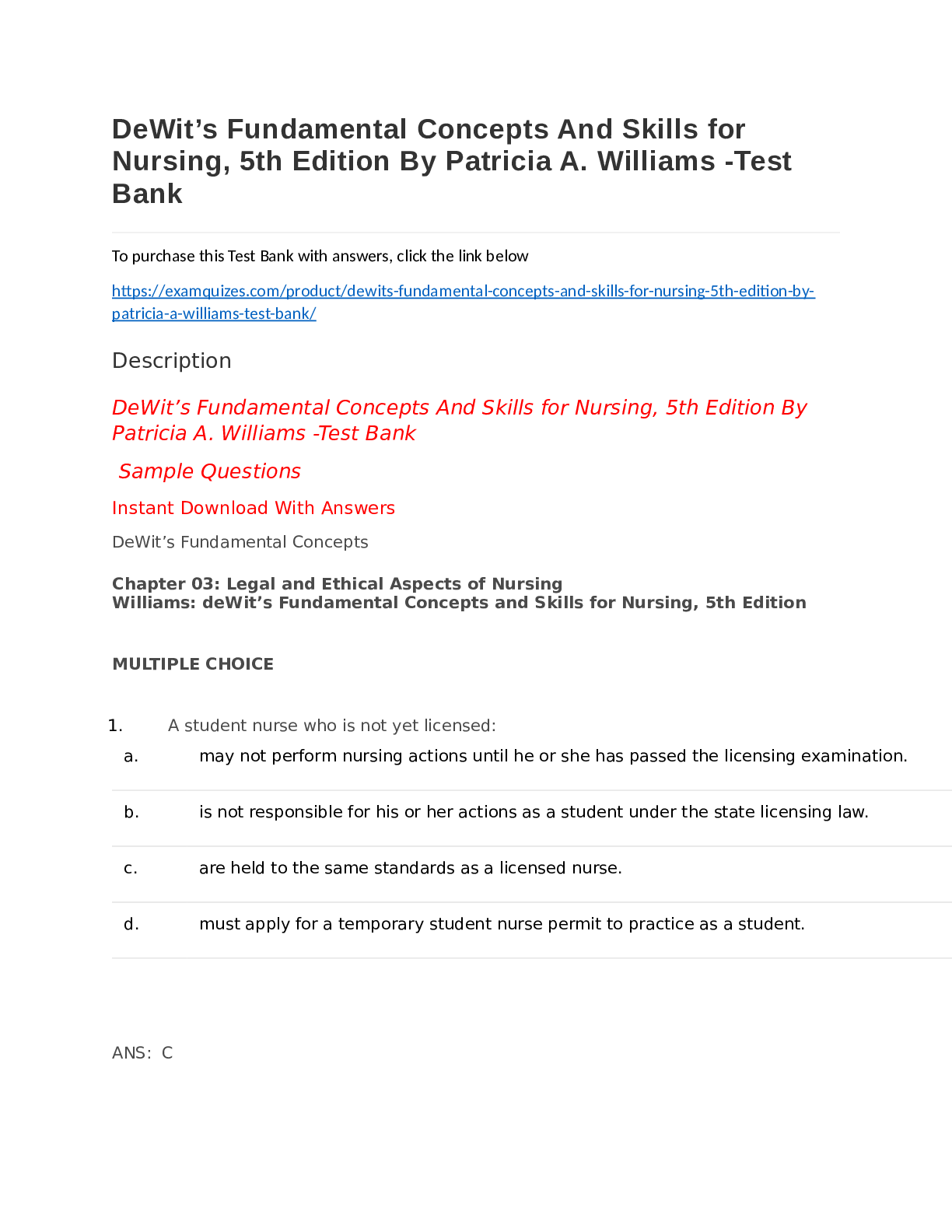

.png)
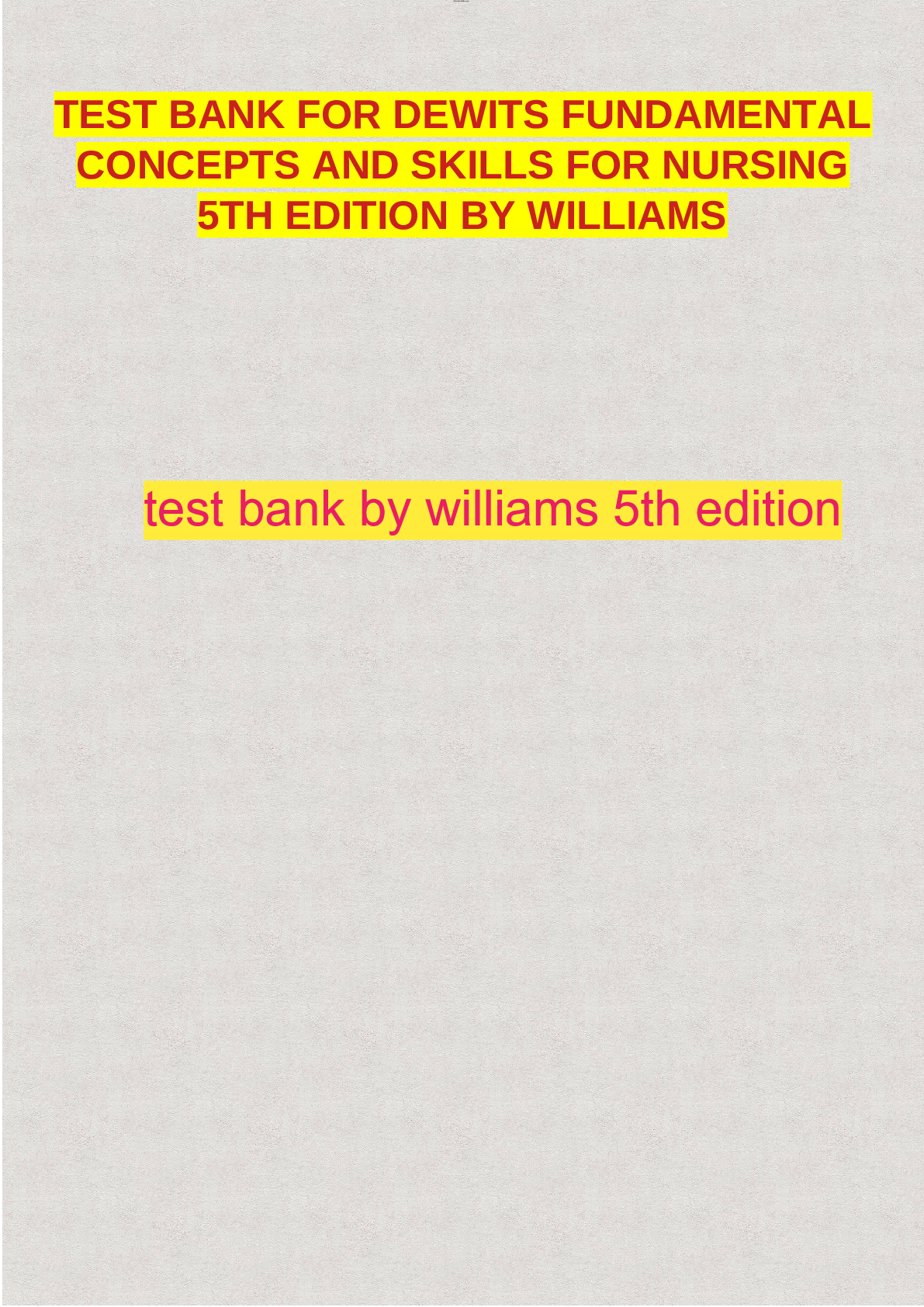
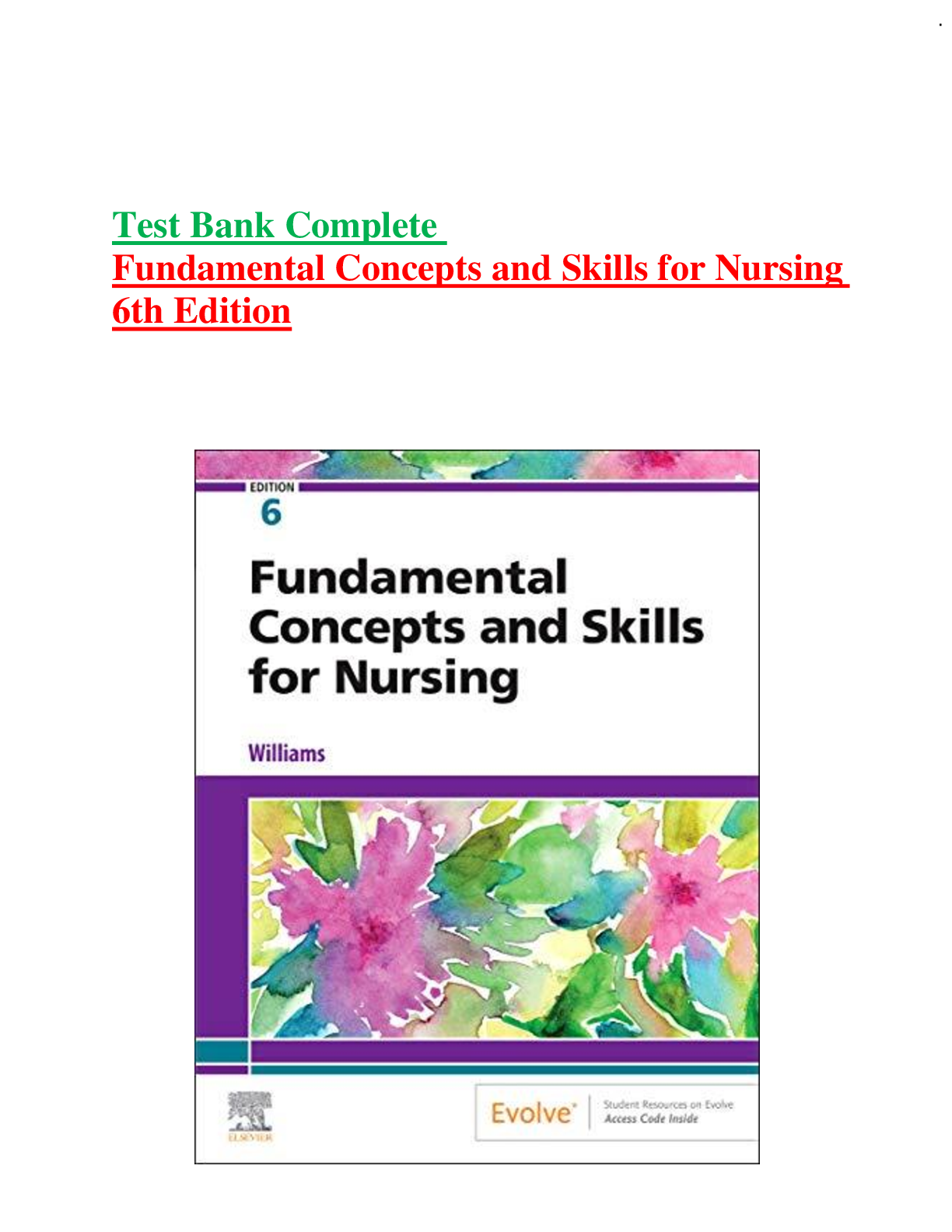
.png)
.png)
.png)
.png)

.png)
.png)

.png)

.png)

